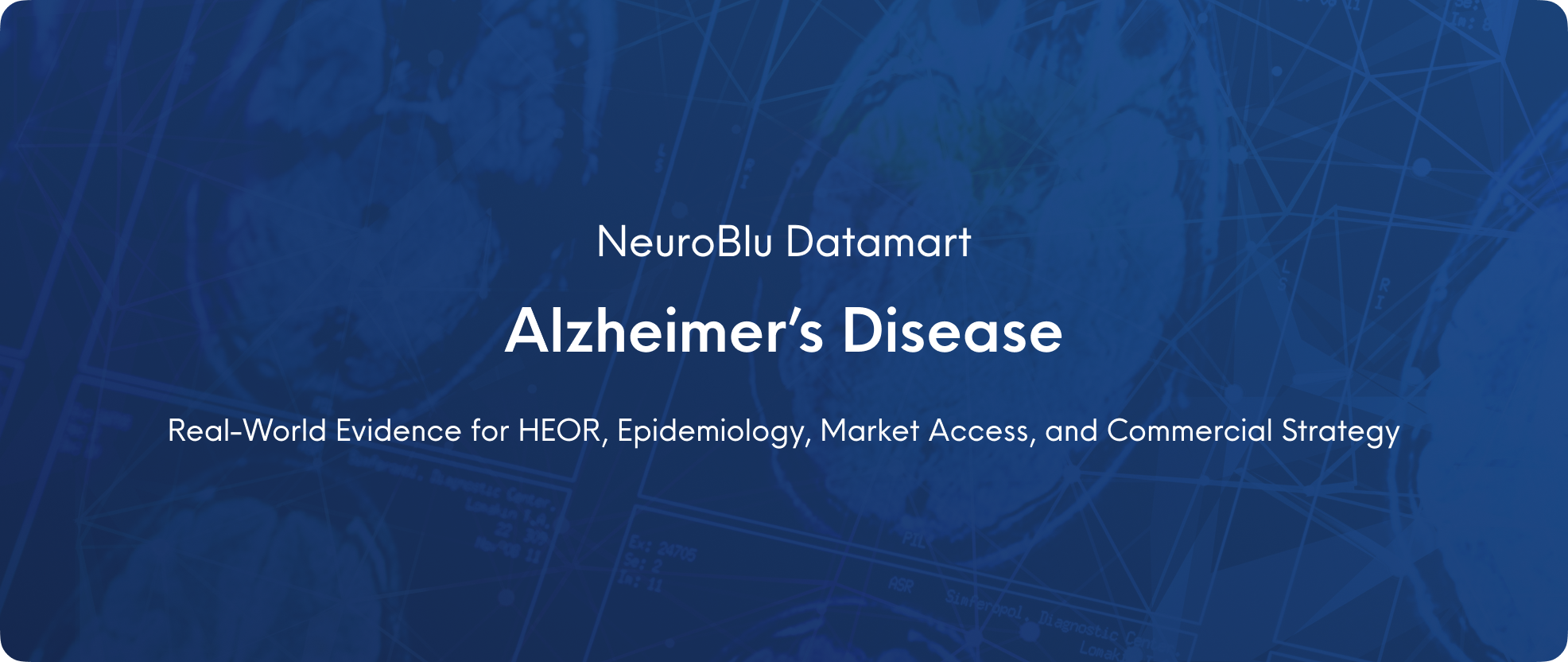
Across the pharmaceutical industry, teams struggle to access the depth and completeness of real-world data (RWD) needed to answer critical questions in Alzheimer’s Disease (AD).
The lack of integrated data in dementia care, spanning geriatrics, neurology, and psychiatry, limits the ability to assess disease burden, model progression, and understand treatment patterns, forcing pharma teams to make high-impact decisions on incomplete evidence. This slows innovation, weakens payer and HTA submissions, and increases risk across both pipeline and in-market strategies.
Existing datasets often lack the clinical detail required to capture the full patient journey, including cognitive scores, neuropsychiatric symptoms, and laboratory results, gaps that are especially problematic in complex cases of Alzheimer’s disease, early dementia, and Mild Cognitive Impairment (MCI). Neuropsychiatric symptoms, which may emerge at any stage of Alzheimer’s disease, create significant clinical, economic, and caregiver burdens, yet remain poorly documented in most real- world data (RWD) sources.
NeuroBlu Data delivers the most clinically rich EHR-based dataset for Alzheimer’s disease and Mild Cognitive Impairment (MCI). Spanning 10+ years, NeuroBlu integrates structured data and clinical notes with NLP-enrichment to capture the nuances of care in the real world.
Alzheimer’s Disease
Mild Cognitive Impairmentients
Total Visits
Total Labs
Total Scales
By linking these data with tokenized claims, labs, and other RWD sources, NeuroBlu enables true longitudinal patient journeys across outpatient and inpatient care settings, a level of integration and phenotyping unmatched by others.
NeuroBlu Data enables pharma teams to:

To capture clinical context and nuances (symptom severity, caregiver observations, ADL changes, crisis events, and treatment rationale) that structured data alone misses.

Such as agitation, aggression, and psychosis, as a consequence of integrating data from geriatrics, neurology, and psychiatry, and assessing their impact on patient outcomes, and healthcare resource utilization (HCRU).

From early cognitive decline through advanced Alzheimer’s across multiple care settings, phenotyping by stage (MCI, moderate, severe AD) and behavioral profile (e.g., apathy & agitation).

Including prescribing practices at diagnosis, treatment sequencing, rationale for changes, discontinuations, side effects, and progression.

Enables tokenization and linkability with claims, labs, imaging, genetics, and other real-world data sources, seamlessly integrating disparate streams into a unified longitudinal patient journey that reflects the full complexity of Alzheimer’s disease.
Delivered with rapid onboarding and frequent refreshes, NeuroBlu Data empowers HEOR, epidemiology, market access, medical affairs, and commercial teams.